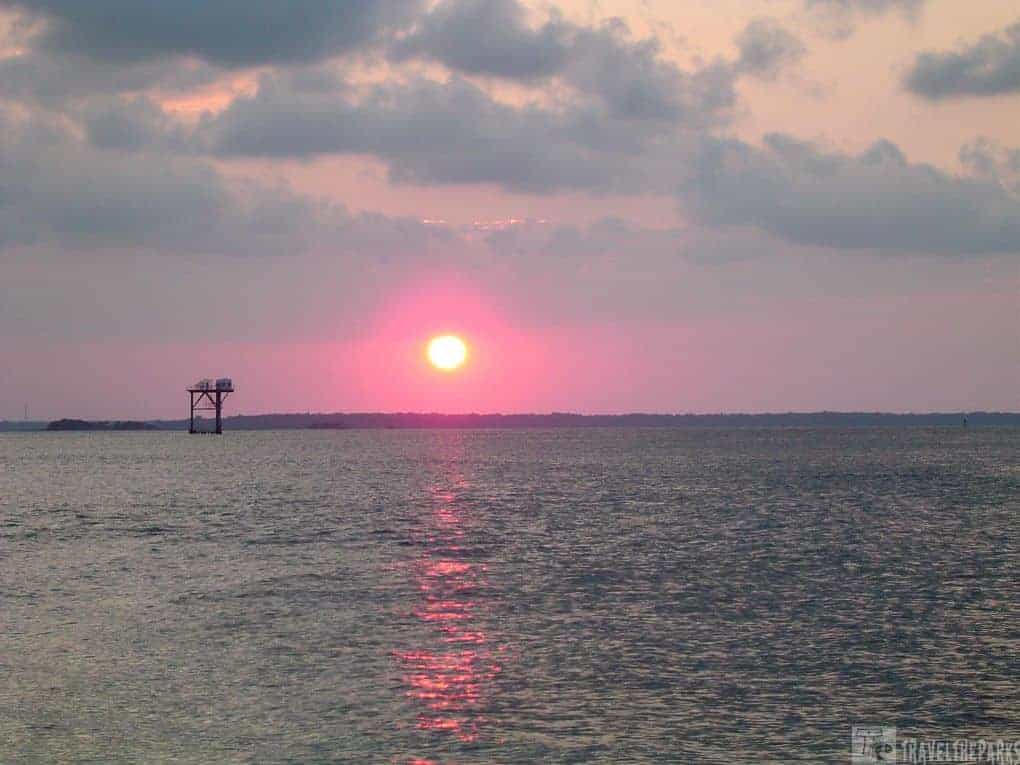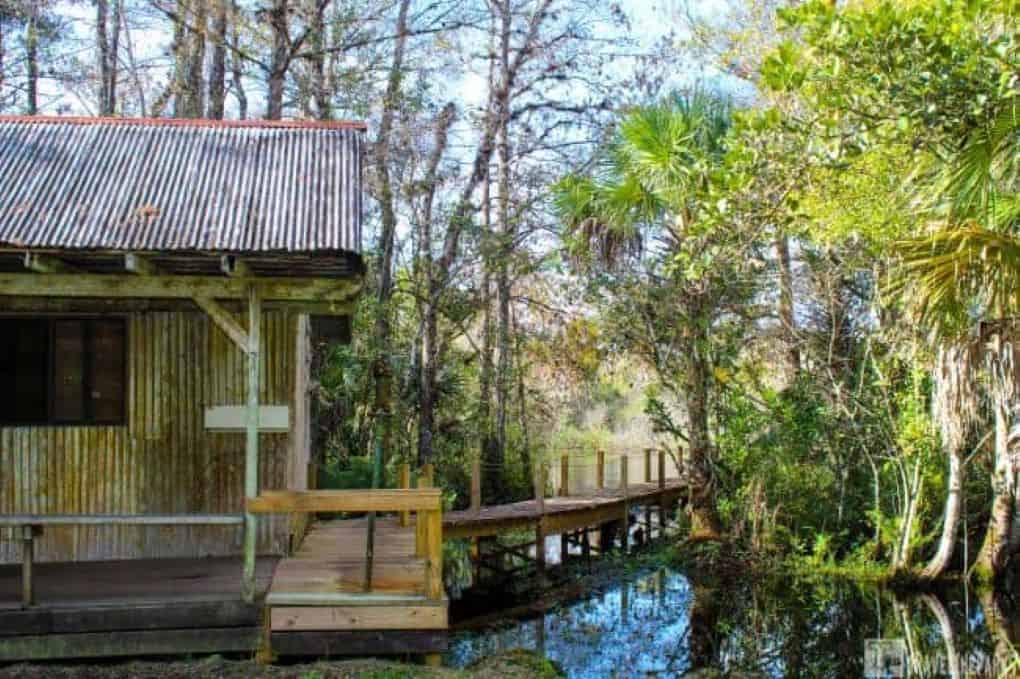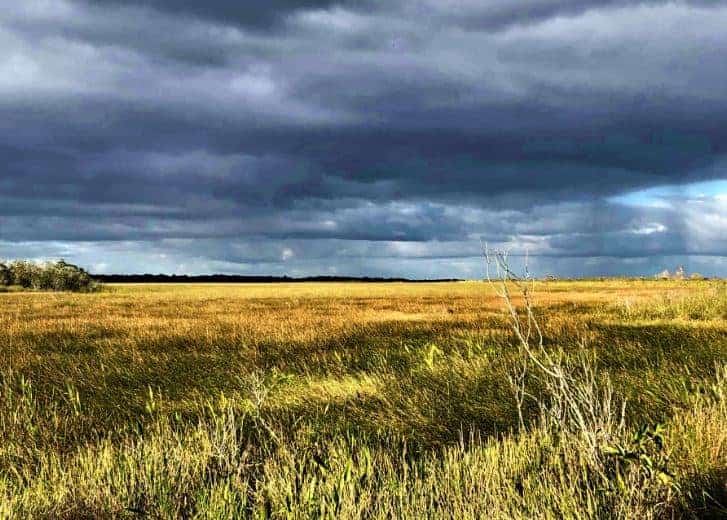A short day trip from Orlando or St. Augustine on Amelia Island’s northeastern side, you will find Fort Clinch state park. For those interested in historical adventures, you can unlock Fort Clinch Amelia Island’s historic charm. A hidden gem Fort Clinch is a true treasure on beautiful Amelia Island. At Fort Clinch State Park, visitors can unlock an 1860s historic adventure. We think Fort Clinch is one of Florida’s best-kept secrets.

Table of Contents
Where Exactly is Amelia Island Located?
Just outside the small town of Fernandina beach, it is one of 175 state parks in the state of Florida. With 1.400 acres, the park offers a variety of activities and attractions, including exploring the Civil War-era fort and museum, hiking scenic trails, swimming, fishing, birdwatching, shelling and scanning for shark’s teeth along the picturesque beach.

Take I–95 to the Fernandina Beach/Callahan exit, turn right east on A1A. Stay on A1A, for 16-miles. At the intersection of 8th Street and Atlantic Avenue, turn right on Atlantic Avenue, follow for 2-miles. The park will be on the left.
This post may contain affiliate links, meaning if you purchase something through one of these links, we may earn a small commission at no extra cost to you! Read the full disclosure policy here.
Discover Historic Fort Clinch on Amelia Island: Follow the Buccaneer Trail to the Past
The original Buccaneer Trail begins near Fernandina beach, meanders 72-miles following A1A through the barrier islands of Amelia Island, Big Talbot Island, Little Talbot Island, Fort George Island, Mayport, Timucuan Preserve before ending in St Augustine. In the early years, they considered Amelia Island a haven for pirates. Amongst the famous scallywags were John and Pierre Lafitte, Luis Aury, and Gregor MacGregor. The most notorious was Blackbeard himself. Legend claims buried treasure remains hidden somewhere in Fernandina Beach. This natural harbor once anchored over 200 pirate ships at one time.
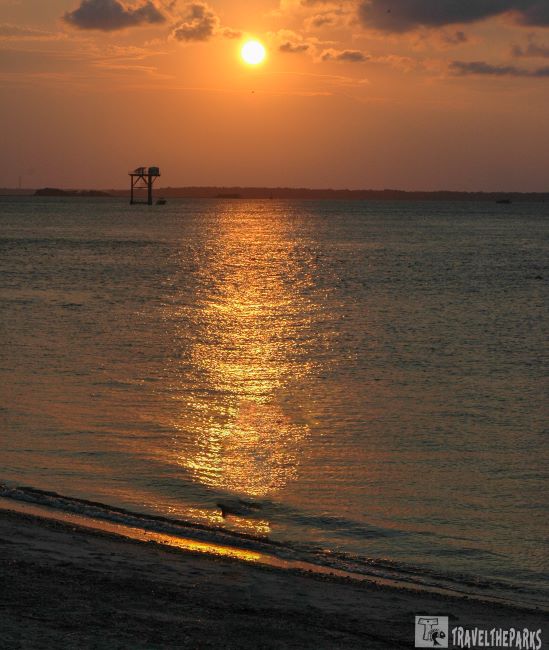
Need to Know Before a Visit to Fort Clinch
- Operating Hours and Admission Fees: Fort Clinch is typically open from 9:00 AM to 5:00 PM, but it’s always a good idea to check the official website for any updates or seasonal hours. There is an admission fee for entering the fort. Fees are $2 for pedestrians and $6 for vehicles (up to 8 passengers). Discounts are available for age 62 and over and children.
- You can enjoy a self-guided tour of Fort Clinch with the help of informative signs, or you can opt for a guided tour (available during peak times or by reservation) to dive deeper into the fort’s history.
- Pets are allowed in the Fort Clinch State Park, but they must be kept on a leash. However, pets are not permitted inside the fort itself.
- Best Time to Visit: The spring (March to May) and fall (September to November) months; the weather is mild and pleasant, with daytime temperatures from 60°F to 80°F. Summer (June to August) can be hot and humid in Florida. Winter (December to February) offers cooler temperatures, often in the 50s°F to 70s°F range.
- What should we bring? Remember, a good pair of sunglasses, sunscreen, towel, ball cap or wide-brimmed hat, and a light loose-fitting long-sleeved shirt for sun protection while on the beach. If you plan to walk the trails, bring bug spray for the biting insects.

Unlock the Rich History of Fort Clinch on Amelia Island
Fort Clinch itself is a must-see, especially for history buffs. The Fort is a great example of how early Americans defended our growing country. Strategically important in protecting the natural deep-water port at the entrance to the St Marys river and Cumberland island it was first fortified in 1736 by the Spaniards.
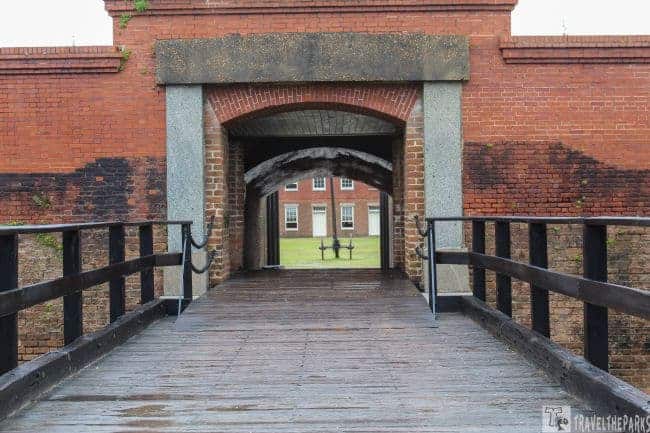
In 1847, the government built a new fort after the Second Seminole War. It was a part of the Third System of coastal defenses to protect against foreign invaders. Named for General Duncan Lamont Clinch, a United States commander in the War of 1812 and both the First and Second Seminole Wars. Designed In the shape of a pentagon and characterized by thick masonry walls, it has an outside wall and an interior courtyard with barracks. Five corner bastions help define the fort’s shape. There are several structures in the fort’s interior courtyard, including a two-story barracks.

When war broke out between the North and South in April 1861, the Florida state militia occupied the fort. In February 1862, however, General Robert E. Lee ordered confederate troops to leave Amelia Island. Union soldiers seized the fort in March of that year. Construction was ongoing until 1867, when the army abandoned the fort. In 1898, at the start of the Spanish-American War, work once again continued with fortification to house 70-pieces of heavy artillery. One year later, the fort was still incomplete and was abandoned once more.
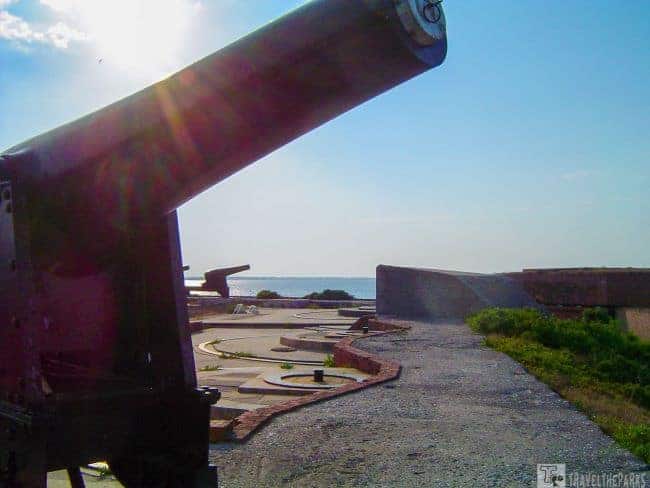
Fort Clinch Visitor Center & Museum
A nature lover’s paradise, the 3-mile drive to the fort was magical. The tree lined canopy draped in Spanish moss dangled from the many old oaks. It was breathtaking! It reminded us of old Savannah, Georgia.
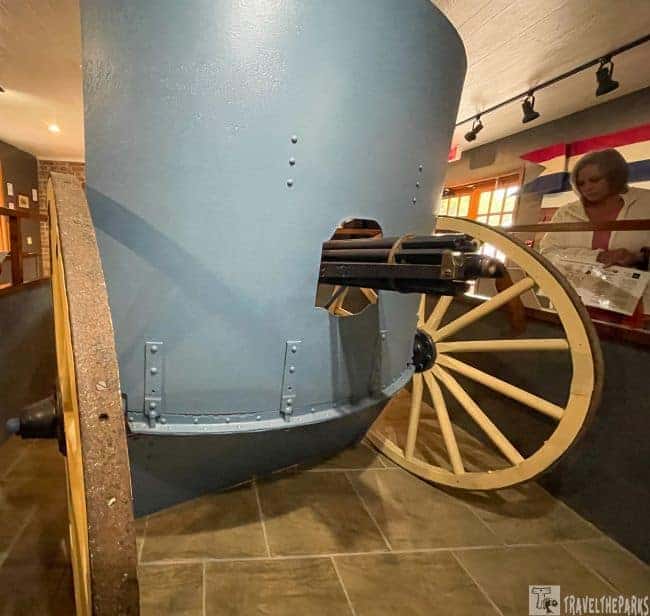
We began our day by stopping at the visitor’s center. Paying our admission fee, the center has a small gift store with souvenir items for purchase. They also sell snacks and water. The next stop was the museum.

I suggest touring the museum before entering Fort Clinch. The many photographs and artifacts tell the fascinating history of this fort. Here we learned that the State of Florida purchased the fort and 256 acres surrounding it in 1935, and in 1936 the Civil Conservation Corps began renovating the structures, building a museum, and developing the grounds for a state park. In 1938, the fort opened to visitors. Later in 1972, the fort was placed on the National Register of Historic Places.
There is an informational video that plays on a continuous loop. The movie gives insight into what life was like for the soldiers living at the fort. The restored Gatling gun was pretty cool, too!

Fort Clinch on Amelia Island: Unlocking a Coastal Military Past
You can almost hear the voices of the occupants of the fort as we crossed the drawbridge. Passing through a cavernous tunnel, the thick brick walls immediately dropped the temperature a few degrees. The tunnel opens onto the parade grounds, the interior of the fort. Visitors can currently explore the park on their own as part of a self-guided tour.
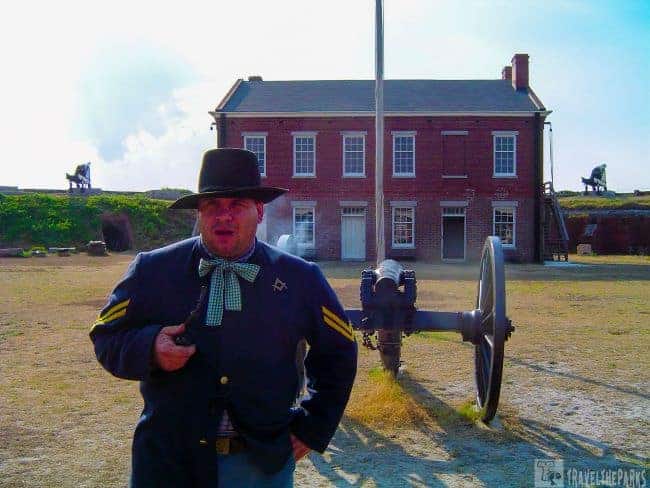
We were fortunate, getting a glimpse into early colonial life. Reenactors dressed in Civil War era uniforms give a living history of daily life at the fort. A unique learning experience, the Re-enactors answered our questions while never breaking out of character. The authentic 1st New York Volunteer Engineers circa 1864 at Fort Clinch is a real treat.
PRO Tip: Visitors are treated to demonstrations of firepower, marching drills, and other daily life activities during the first weekend of every month.
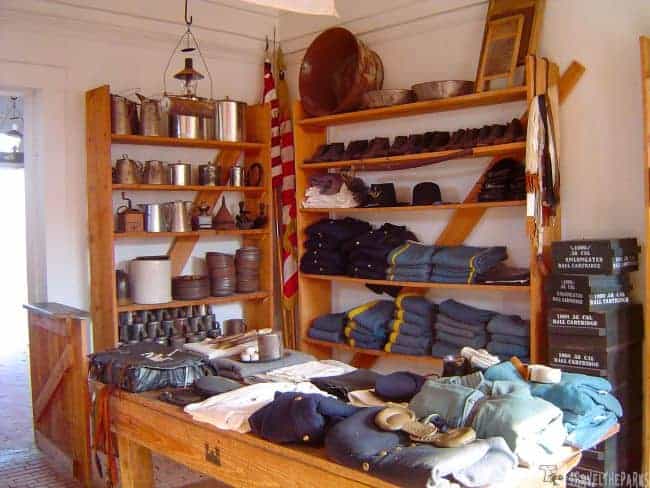
Inside the Barracks and Storerooms of Fort Clinch
Next up was the two story restored quartermaster building. Upon entering the Sutler’s store, we saw rows of government -issued uniforms and ammunition boxes were neatly stacked along with everyday items soldiers would need. It amazed me at how meticulously organized the room was. Many of the items would have given the soldiers and families the creature comforts that made a living during these times so much better.
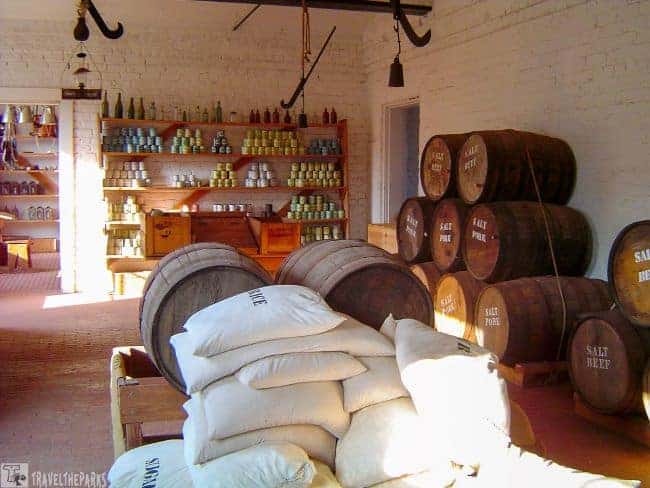
Behind the Lines: The Laundry Room at Fort Clinch
It is worth strolling through all the different areas. Among the facilities are the mess hall, laundry jailhouse, guardhouse, and bakery. The laundry appeared as if the laundress had just left with uniform shirts drying on the wash line. As if prepared for a soldiers’ dinner, the mess hall tables featured authentic plates and silverware. The long table welcomed many soldiers to a hot meal in the late 1800s.

On my first visit to the fort with the Teacher Forestry tour group, I could see inside many of the buildings that are usually closed to the public. A small wooden one story building housed the bakery and blacksmith. They filled it with period-correct items that made it seem like you were in the 1860s.
My favorite room was the dentist’s office. Here I sat in the chair while a colleague pretended to be the dentist. It made me feel somewhat weary to have to pedal the wheels to make the tooth drill operate. Not to mention how painful it must have been.

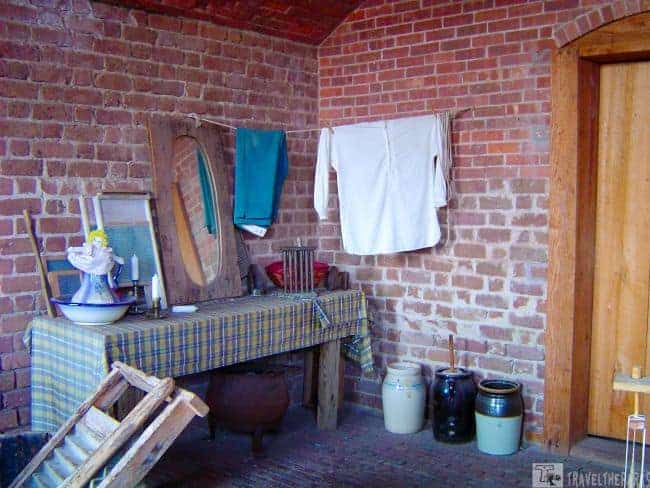
The prison and jail seemed dark and foreboding. The chains embedded in the floor seemed like harsh punishment, given the conditions.
The bakery and blacksmith shops are in a one-story brick/wood structure. They displayed authentic items in each shop. Period re-enactors will conduct demonstrations on weekends.
The foundation of the Officers’ Quarters remains; they have not rebuilt it.


Fort Clinch Ramparts: A Walk Along Amelia Island’s Historic Walls
We climbed the stone spiral staircases up to the ramparts. Walking the upper parapet walls was like stepping back in time. From the fort, visitors can see an excellent view of the St. Mary’s River, and Cumberland Island across the river in Georgia. I imagined what it was like for the soldiers looking at the stunning waterfront views of Cumberland Island sound watching the sunset. Today, if you’re lucky, you’ll glimpse a Trident submarine departing or arriving Kings Bay or a replica pirate ship.
From these ramparts, the 15 inch Rodman Columbiads guarded the shores of Amelia Island. These Columbiads were a large-caliber, smoothbore, muzzle-loading cannon able to fire heavy projectiles at both high and low trajectories. An excellent seacoast defense weapon. They had a long range.
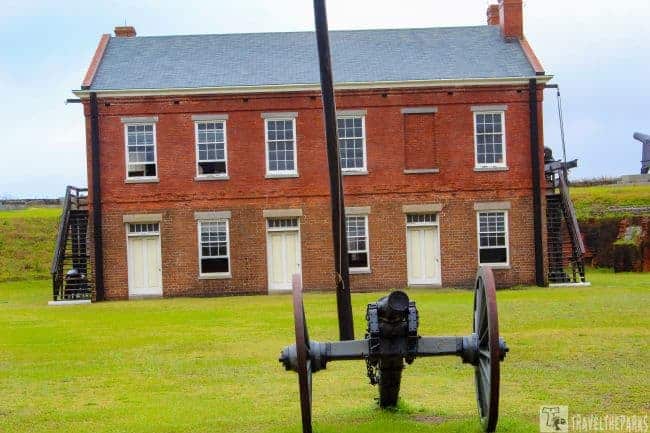
Find Release on Hiking Trails at Fort Clinch State Park on Amelia Island
If hiking is your thing, check out one of the many trails off the main road. Our favorite was Egan’s Creek turnoff with its view of the Amelia Island Lighthouse, Florida’s oldest lighthouse. The unspoiled natural beauty of this island is showcased best here.
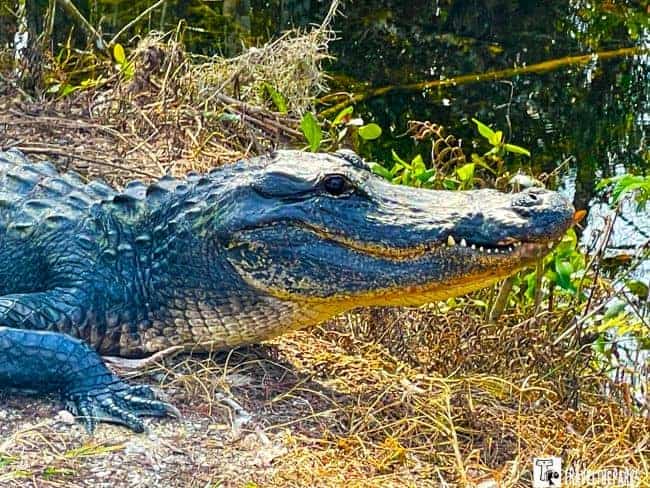
The Fort Clinch State Park is on the Amelia Island Trail, a network of bike paths that crisscross Amelia Island and is linked to the East Coast Greenway. The 6-mile path follows the park road. Great for mountain bikers.
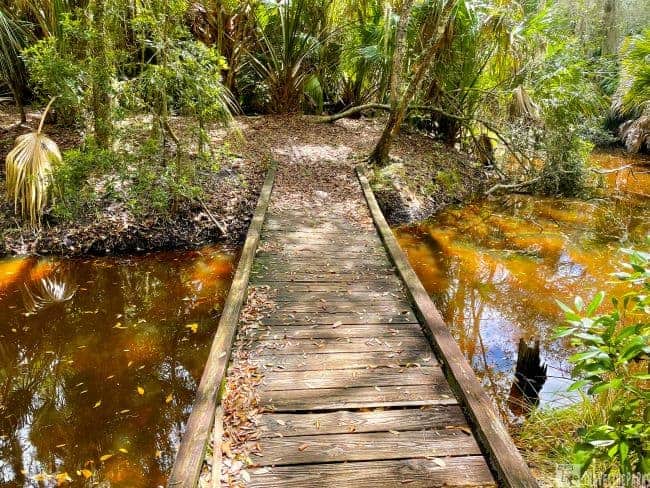
Willow Pond Trail – The nature walk to a landlocked body of fresh water known for its resident alligators and migratory birds. The first is only a short 0.6-mile loop takes about 25 minutes to walk. It is a mostly shaded trail through maritime hammock that is dominated by old Florida oak trees draped in Spanish moss. The 2nd Magnolia trail is a bit longer at 45 minutes, so bring water and dress appropriately for the season. Beautiful wildflowers line much of the trail.
There is a birding boardwalk trail exhibit with some explanatory displays about the birds found on Amelia Island. The boardwalk leads all the way down to the ocean beach and there are public restrooms available.
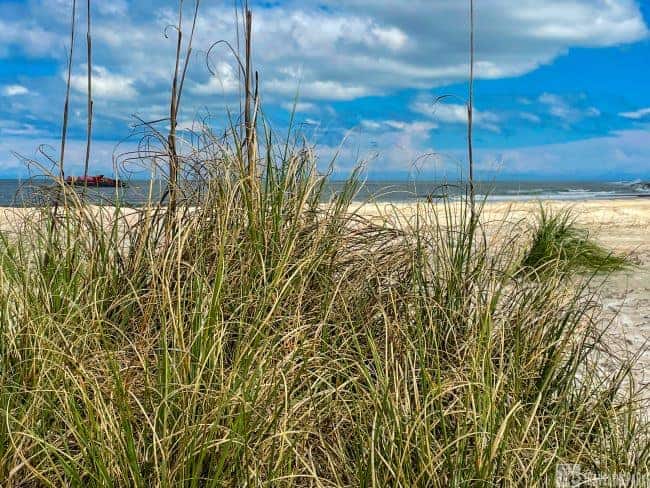
Unravel Historical Downtown Fernandina Beach on Amelia Island
If you are looking for charming historic sites and architecture, then you will love Fernandina Beach. Many of the original early 1900s homes in the downtown area have been lovingly preserved. Many have kept their historical appeal. Stop in at the Palace saloon built in 1878. It is unquestionably the oldest watering hole in Florida.

There are trollies or horse carriages you can use at reasonable prices. We found the best ways to appreciate this town was by horse-drawn carriage. Listening to the clip clop of the horses’ hooves on the cobblestone roadway was delightful. Felt like stepping back in time.
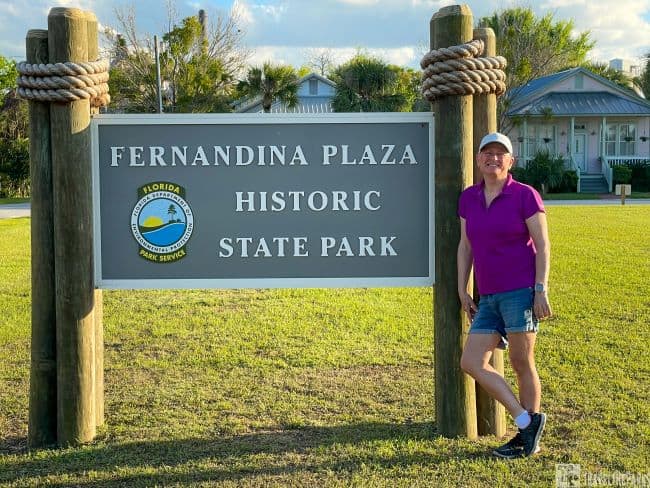
Our carriage passed by the Fernandina Plaza Historic State Park, where the long-gone Fort San Carlos once stood. Originally built to guard Spanish colonial Fernandina in 1816, it is a part of the old town historic district. Much of the site has eroded into the Amelia River. All that remains are the fort’s parade grounds. While walking the grounds and reading the signs, we got an overview of the site dating from 2000 B.C. through till present day. Our guide told us several groups occupied the bluffs in the past, including Native Americans, the Spanish, the British, patriots, pirates, and federal troops. This is probably why Amelia Island is also called the Isle of Eight Flags. The tour was a very relaxing experience, and we learned about the history of this charming southern village.
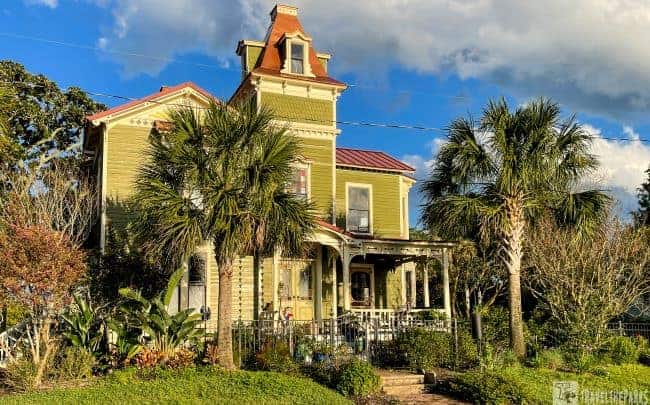
Unlock a World of Flavors in Fernandina Beach – Amelia Island Dining Guide
Downtown there are plenty of trendy gift shops and considering it is spring break, it was not crowded. These are just a few of the many great dining options at Fernandina Beach. Whether you’re in the mood for seafood, French cuisine, or classic American fare, you’re sure to find something to satisfy your taste buds in this charming coastal town.

España Restaurant & Tapas: The restaurant housed in an old house in the historic part of Fernandina Beach, specializing in distinctive flavors from Spain and Portugal. Know for its traditional Spanish dishes, including paella, tortilla Española, and chorizo al vino. The restaurant uses fresh ingredients and classical cooking techniques to create authentic flavors and textures.

Timoti’s Seafood Shak: If you’re looking for fresh, locally caught seafood in a casual setting, Timoti’s is the place to go. The menu features a variety of seafood dishes, from shrimp and oyster baskets to fish tacos and ceviche. Excellent food and ambiance! It is a small location with outdoor seating only. The tables were all picnic style.
Salt: This award-winning restaurant is known for its fresh seafood and contemporary American cuisine. With a focus on seasonal ingredients and creative presentation, Salt offers a sophisticated dining experience in a stylish setting.
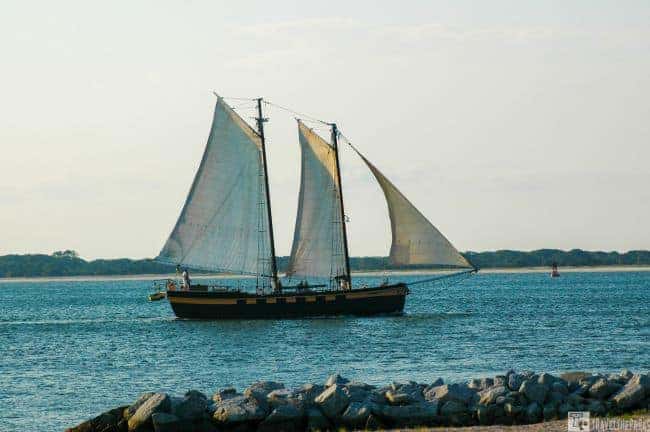
Final Thoughts: Unlock Fort Clinch Amelia Island: Florida’s Hidden Historical Treasure
Of all the forts we have visited, this was our first in Florida. We have since visited many of Florida’s forts. Fort Clinch, Fort Jefferson, and Fort Pickens each showcase unique chapters of coastal military history—Fort Clinch offers a well-preserved Civil War-era fort on Amelia Island, Fort Pickens boasts strategic Gulf Coast defenses on Pensacola Beach, while Fort Jefferson impresses with its massive remote structure in the Dry Tortugas.
We saw the most beautiful sunsets from the beach at Fort Clinch. This Florida fort is a time capsule into the storied history of 1846, as told through the re-enactors. If you are looking to unlock a barefoot adventure, we highly recommend Fort Clinch State Park. Finding solitude is easy on Amelia Island.
Please tell us about your weekend getaway to unlock Fort Clinch or Amelia Island? If you plan to visit, what are you most excited about? We would love to hear about your adventures! Share in the comments below.

